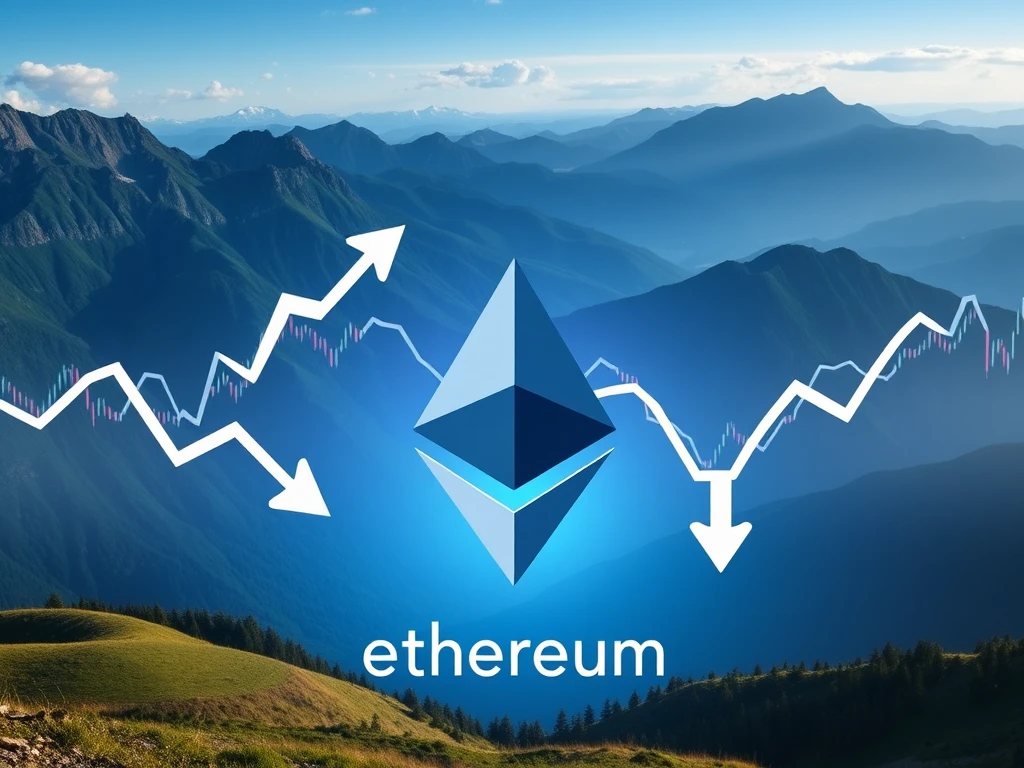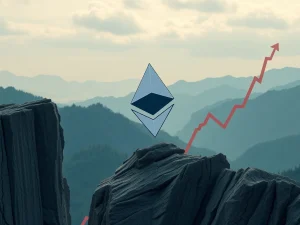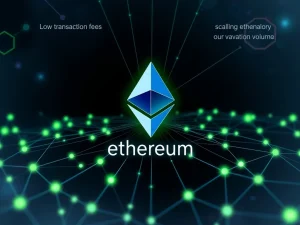Ethereum Price: Startling Data Challenges ‘Generational Bottom’ Narrative

Recent price action has put the spotlight back on the Ethereum price, sparking intense debate among traders. While some optimistically declare a potential ‘generational bottom’ around the $1.4K mark, a closer look at key data points reveals a much more nuanced and, frankly, less bullish picture. For anyone following the crypto market, understanding these underlying signals is crucial before making investment decisions.
Why ETH Price Data Sends Mixed Signals
Despite Ether (ETH) climbing back above $1,700 recently after a period of selling pressure, its performance year-to-date has lagged significantly, underperforming the broader altcoin market by 23%. This contrasts with the narrative from some proponents who champion ETH for a massive bull run based on its decentralized system.
However, the data presents challenges to this optimistic view:
- Fee Drop: Ethereum network daily fees have plummeted by 95% since January. This drastic drop signals significantly lower demand for processing transactions on the network.
- Inflationary Pressure: With low network activity, the amount of ETH burned through transaction fees is insufficient to offset the new coins issued for staking rewards. This makes ETH inflationary, counteracting one of its potential deflationary mechanisms.
- TVL vs. Demand: While Ethereum remains the leader in Total Value Locked (TVL) in DeFi, this metric hasn’t translated into increased network usage or scarcity for ETH, leaving traders less impressed.
These factors suggest that despite ETH’s current price level, the fundamental demand drivers needed for sustained growth appear weak at the moment.
Competitors and the Broader Crypto Market Landscape
Adding complexity to the picture, Ethereum was notably one of the few major cryptocurrencies that didn’t hit a new all-time high in 2024, unlike competitors such as Solana (SOL), Tron (TRX), and BNB (BNB). Some critics argue that the shift away from Proof-of-Work mining might have diminished a key competitive edge Ethereum once held.
The competitive landscape is also heating up concerning institutional interest:
- Spot ETF Race: While spot Bitcoin (BTC) and Ether (ETH) ETFs are available in the US, competitors like Solana (SOL) and XRP (XRP) are seeing hopeful anticipation for their own potential spot ETF approvals. More offerings would likely dilute potential institutional demand across altcoins.
- ETF Flows: Recent data shows US-listed spot Ether ETFs experiencing net outflows ($10 million between April 21-23), while similar BTC instruments saw record-breaking inflows. This divergence highlights a current preference for Bitcoin among institutional players.
This evolving crypto market structure poses challenges for ETH’s dominance and potential for sustained outperformance.
Historical Trends in the Altcoin Market
Looking back at historical price movements for ETH within the altcoin market capitalization offers cautionary tales against expecting quick, lasting rallies.
Consider these past patterns:
- June 2022: ETH’s market share among altcoins hit a low (around 26.5%) when the price dropped below $1,100. A subsequent rally to $2,000 in August 2022 quickly faded, with the price falling back below $1,200 within three months. Investors had to wait eight months to reclaim $2,000.
- April 2021: A similar pattern occurred when ETH’s altcoin market share bottomed (26.8%). The price surged from $2,100 to $4,200 by May 2021 but crashed below $2,000 the following month. Traders buying near the peak faced a six-month wait to recover their investment.
This history has instilled a tendency among Ether traders to take profits quickly, which inherently reduces the likelihood of sustained upward momentum needed to reach new all-time highs.
What This Crypto News Means for ETH Holders
The current landscape, as revealed by recent crypto news and data, presents a complex picture for Ethereum. While optimistic calls for a ‘generational bottom’ exist, the lack of strong network fundamentals (low fees, inflationary pressure), increasing competition, and historical price patterns suggest that a lasting, rapid surge is not well supported by the data.
The market narrative has also shifted frequently, moving from utility tokens to NFTs, AI, memecoins, and now RWA tokenization, making it difficult to pinpoint a consistent driver for ETH demand. Some analysts even warn of potential further underperformance relative to Bitcoin.
In conclusion, while short-term price movements are possible, the historical evidence and current network data do not strongly support the idea that $1.4K was a definitive ‘generational bottom’ poised to launch a sustained, massive rally for Ethereum compared to its peers or the broader crypto market. Investors should weigh these mixed signals carefully.









